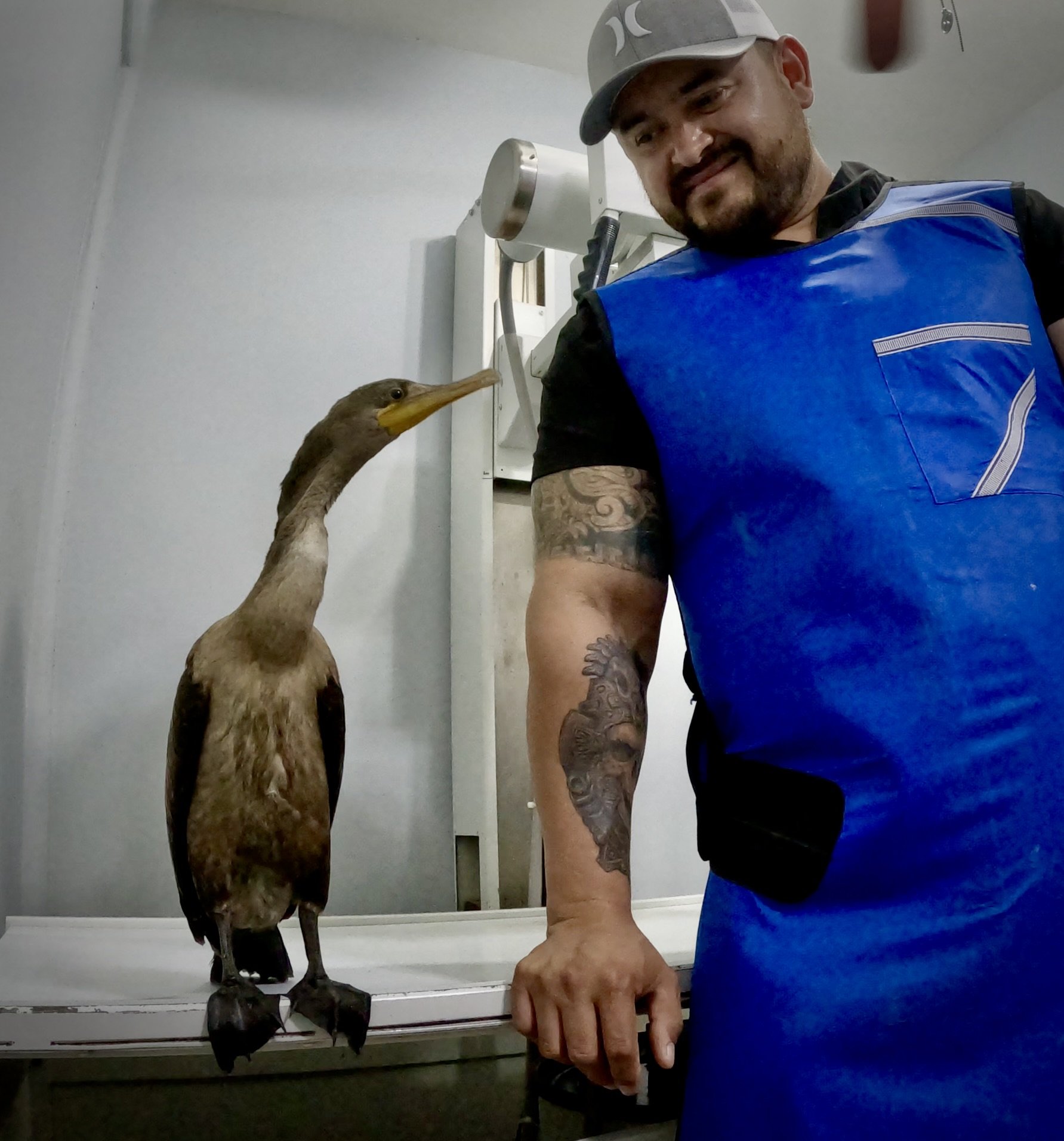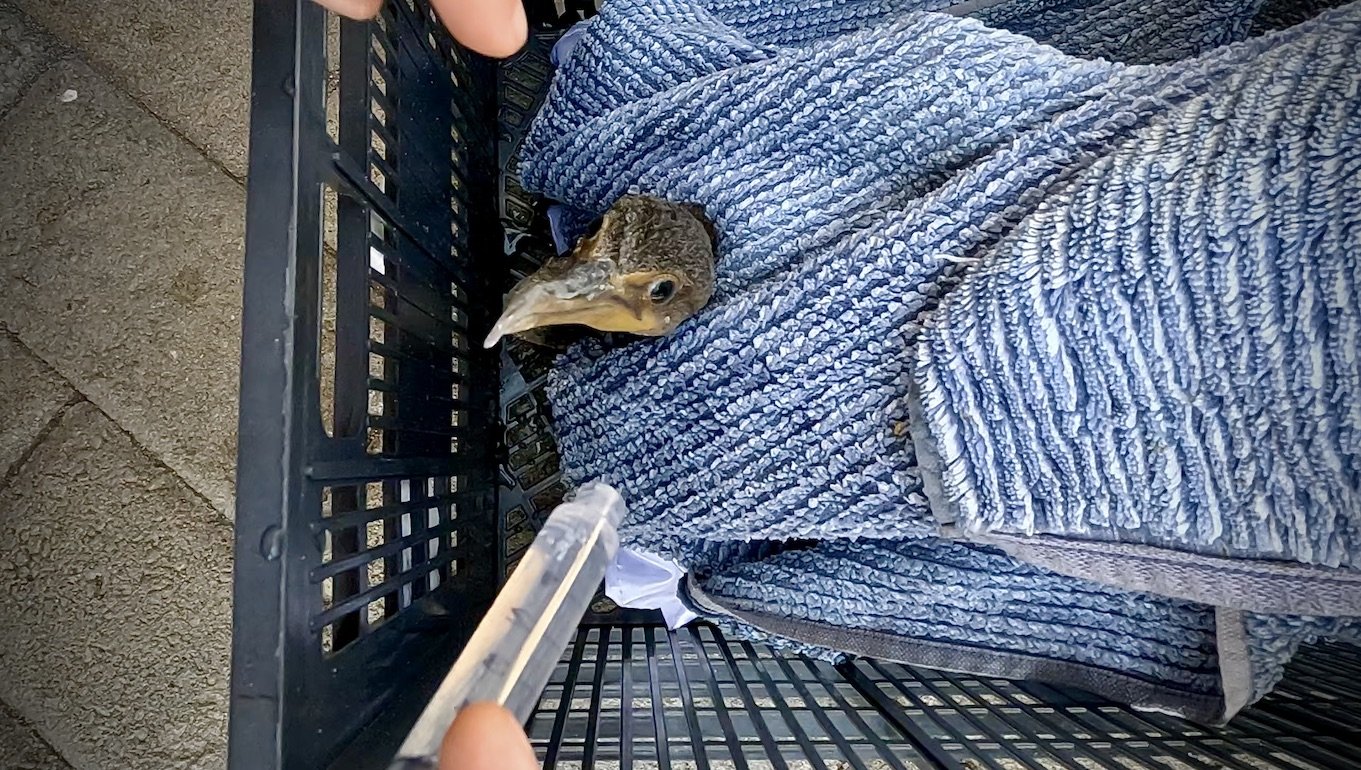Double-Crested Cormorant
Our latest wildlife rescue took matters into his own hands (wings) when he needed help!
He waddled right up to the front door of a home in the Loreto Bay Villages’ Agua Viva neighborhood and rang the doorbell. Ha, no, he didn’t really ring the bell, but he made his presence known with a typical Cormorant guttural call for help
He is a young double crested cormorant. His eyes are still a bit blue so he is very, very young. We think something hurt his neck because the x-ray shows two vertebrae out of place. He was brought to us from the Marine Park of Loreto.
He is super sweet and docile. We suspect his gentility is due to having an illness. We have managed to give him anti-inflammatory and other treatments, which entails slipping the drugs inside a live sardine because he won’t eat a fish unless it’s moving.
We hope to release him back into the wild as soon as he recovers.
Adult Double Crested Cormorant - ©Anonymous | Macaulay Library
Juvenile Double Crested Cormorant - ©Jane Mann | Macaulay Library
Size and Shape
Double-crested Cormorants are large waterbirds with small heads on long, kinked necks. They have thin, strongly hooked bills, roughly the length of the head. Their heavy bodies sit low in the water.
Color Pattern
Adults are brown-black with a small patch of yellow-orange skin on the face. Immatures are browner overall, palest on the neck and breast. In the breeding season, adults develop a small double crest of stringy black or white feathers.
Behavior
Double-crested Cormorants float low on the surface of water and dive to catch small fish. After fishing, they stand on docks, rocks, and tree limbs with wings spread open to dry. In flight, they often travel in V-shaped flocks that shift and reform as the birds alternate bursts of choppy flapping with short glides.
Habitat
Double-crested Cormorants are the most widespread cormorant in North America, and the one most frequently seen in freshwater. They breed on the coast as well as on large inland lakes. They form colonies of stick nests built on islands.








